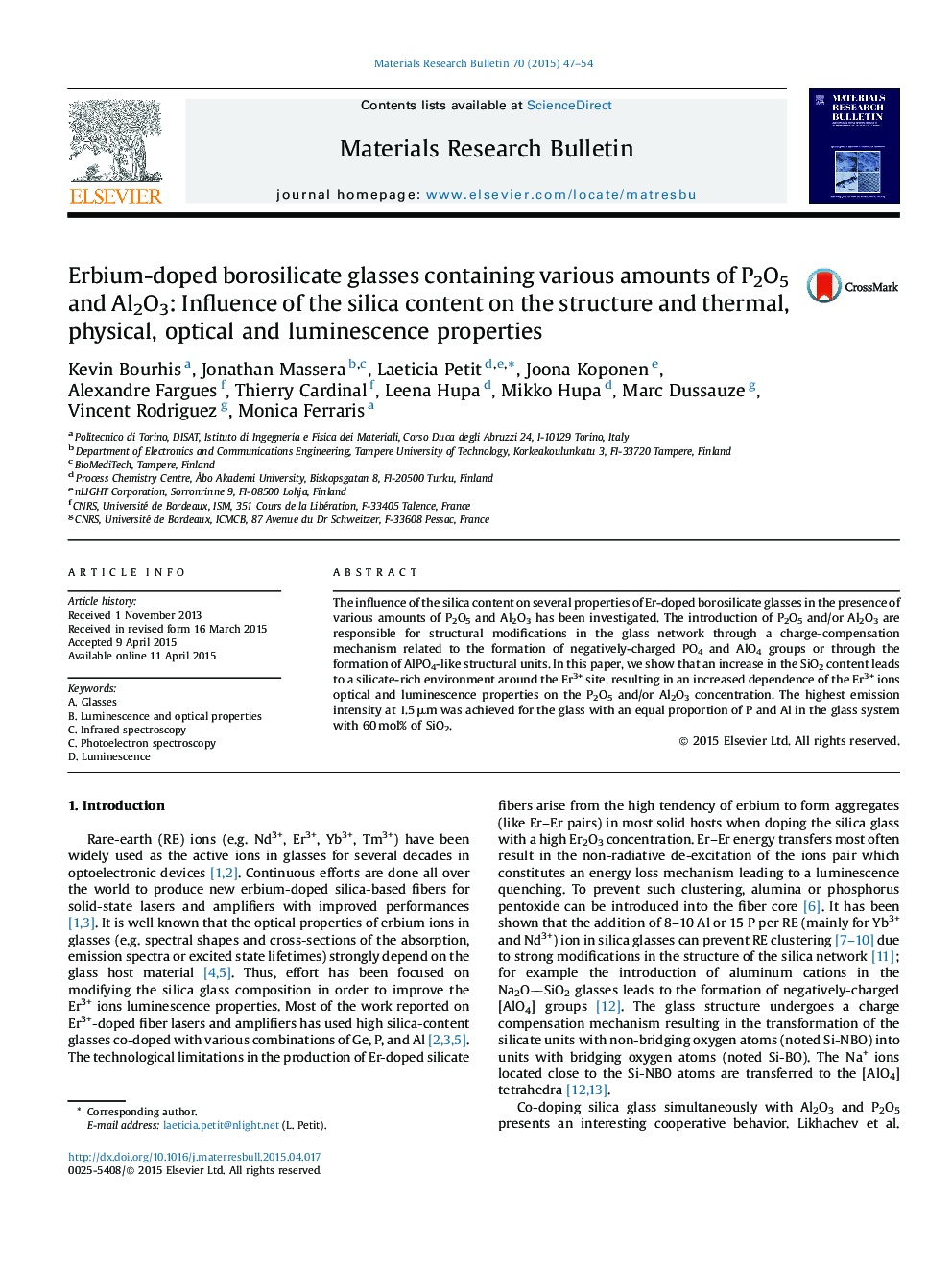| Article ID | Journal | Published Year | Pages | File Type |
|---|---|---|---|---|
| 1487258 | Materials Research Bulletin | 2015 | 8 Pages |
•Er3+ doped borosilicate glasses were processed with different compositions and characterizations.•An increase in the SiO2 content leads to a silicate-rich environment around the Er3+ site.•An increase in the SiO2 content decreases the Er3+ absorption cross-section at 980 nm.•Glasses with 60 mol% of SiO2 exhibit a stronger emission intensity at 1530 nm than glasses with x = 50.•Highest 1.5 μm emission intensity was achieved for the Al and P containing glass with 60 mol% of SiO2.
The influence of the silica content on several properties of Er-doped borosilicate glasses in the presence of various amounts of P2O5 and Al2O3 has been investigated. The introduction of P2O5 and/or Al2O3 are responsible for structural modifications in the glass network through a charge-compensation mechanism related to the formation of negatively-charged PO4 and AlO4 groups or through the formation of AlPO4-like structural units. In this paper, we show that an increase in the SiO2 content leads to a silicate-rich environment around the Er3+ site, resulting in an increased dependence of the Er3+ ions optical and luminescence properties on the P2O5 and/or Al2O3 concentration. The highest emission intensity at 1.5 μm was achieved for the glass with an equal proportion of P and Al in the glass system with 60 mol% of SiO2.
Graphical abstractFigure optionsDownload full-size imageDownload as PowerPoint slide
